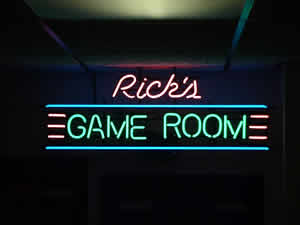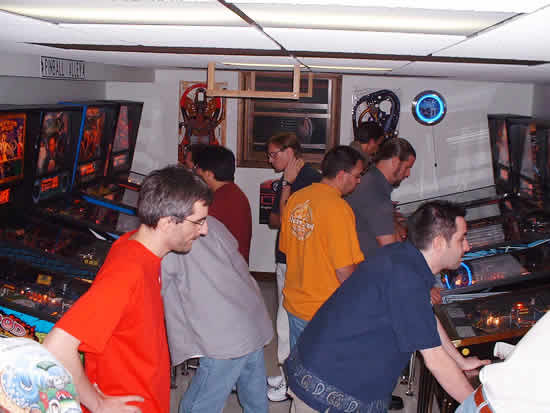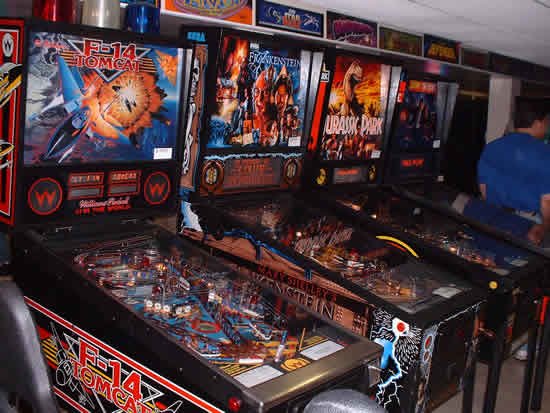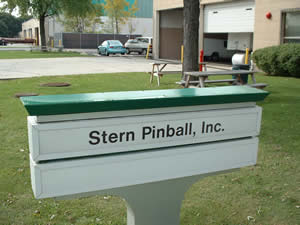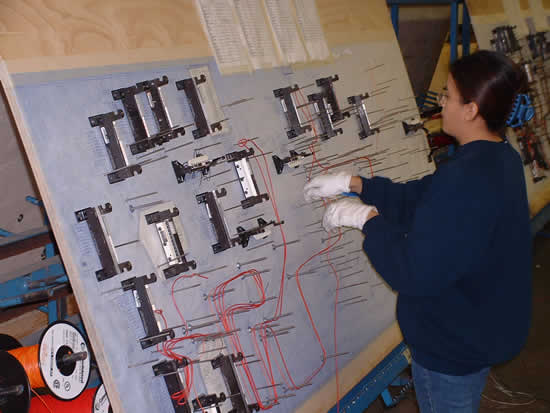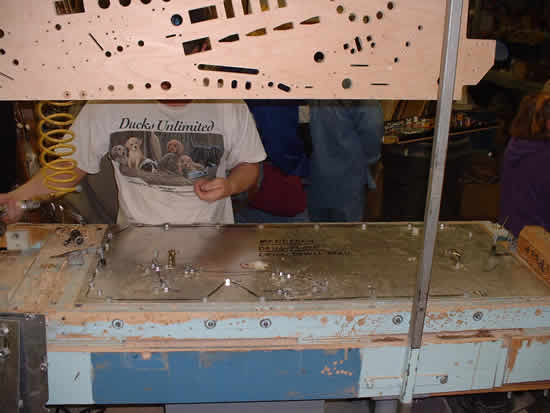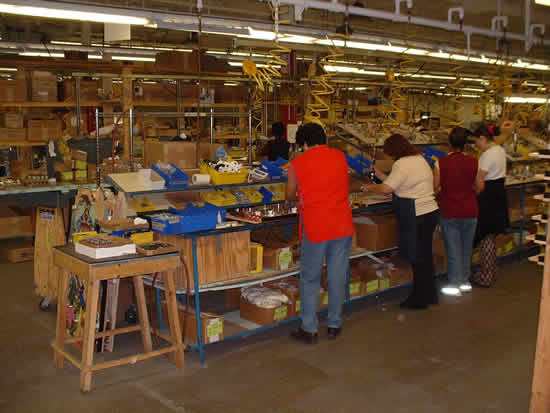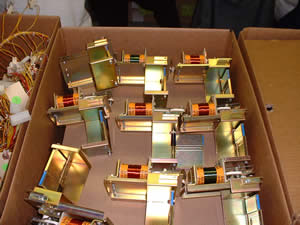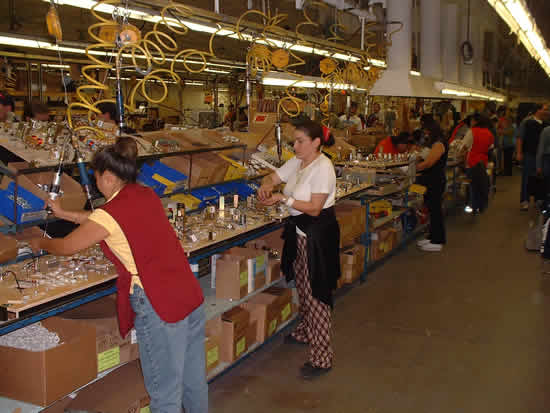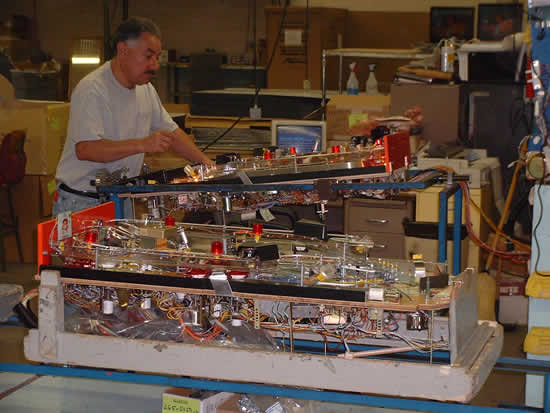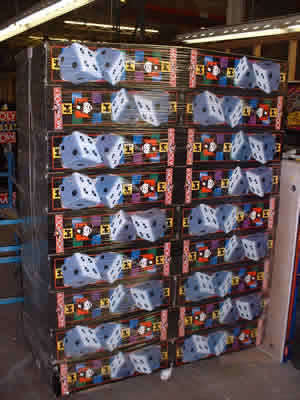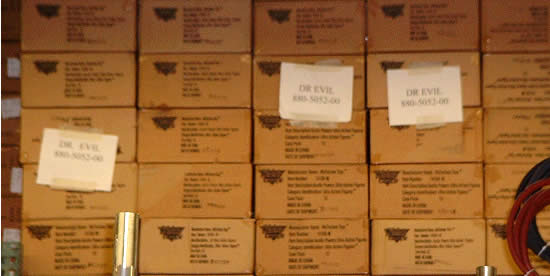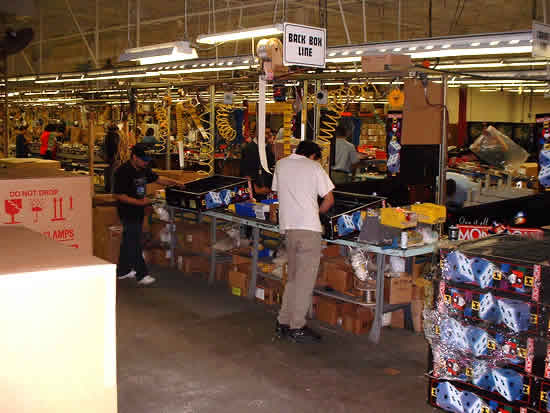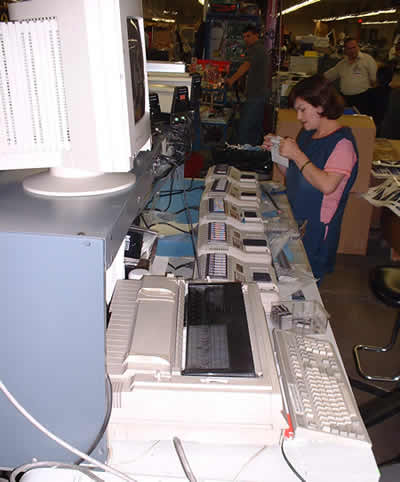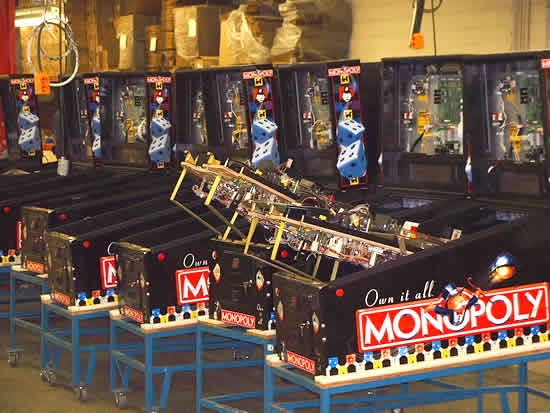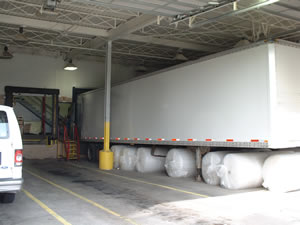
PINBALL
EXPO 2001
BEFORE THE SHOW
|
Anyone going to this year's Pinball Expo must have gone with a certain amount of trepidation. There has been much discussion about the future of Expo and last year's show was criticised for the lack of working games and the poor quality of the schedule. For me, it was 2 years since my last visit and in the intervening time the industry has changed dramatically. Back then, there were still two pinball manufacturers and Gary Stern had just taken over Sega Pinball. Williams' future might have looked uncertain (as expressed by George Gomez) but the Pinball 2000 series was well received and the show was packed with Williams' employees with Pat Lawlor was doing his famous show, giving away prizes and answering questions. Jump forward to the present day. The show opens properly on Thursday evening when the exhibition hall opens but before that there's fun to be had.
This year there were around 60 people assembled in Rick's game room to play around 20 pins and 14 video games including a 4-seater Cruis'n World driving game.
Rick's party is a great way to kick-start the Expo weekend so a big thanks goes out to him for hosting this event. Also a huge debt of gratitude goes to Ron and Lidia Rogalla for providing a ride to and from the party and the hospitality en-route. That took care of Wednesday evening. Thursday morning comes around and the factory tour departs from the hotel. Obviously the choice of factory is somewhat limited these days, so off we go to visit Stern.
Once there, we were divided into groups of 10-12 and shown around the facility. Our group was guided by Stern's Dwight Sullivan and Pat Lawlor Design's Greg Dunlap. PLD designed the current game from Stern - Monopoly. At the last visit to Sega/Stern, the company occupied two buildings, the first housed the game design, construction and shipping while the second made cables and cabinets. Now all the company is concentrated in the second building which makes things a bit cramped but must keep costs down. The production is divided into 3 areas - playfield, backbox and other games. The first section we saw was making wiring looms for the playfield.
After that, the wiring looms are tested for errors before being moved further down the production line. Elsewhere, the playfields are starting their journey through the assembly process. They are first punched full of small indentations and then drilled using the metal guide shown below.
The playfield at the top is an example of how the finished product should look. The metal sheet fits over the playfield and has guides for drill size and depth.
The picture above shows the playfield assembly production line. As the playfield is passed to the right more and more components are added.
Finally the playfield nears completion and is ready for testing.
Over in another part of the building the backboxes are starting their journey too.
The backboxes are then assembled - boards added, cabling, speakers and lighting fitted - and mated with the cabinets before finally having the playfields installed.
All around the factory, other tasks are performed that help to create the final pinball game. The cabinet is fitted with a transformer, wiring and speaker.
Here the game's ROMs are burned and tested before installation.
Finally the playfield is installed into the cabinet and the game is fully tested.
To conclude the factory tour, guests we presented with a translite from an older Stern/Sega game (Apollo 13 in this case) and some Austin Powers sample players which enlivened the journey back to the hotel. Everyone enjoyed the tour, so many thanks to Stern and their employees for putting up with the disruption and to the tour guides for answering all the questions. Some interesting facts came out of the questions. The factory currently makes about 35 games per day. That seemed like a surprisingly small number and some quick calculations make some interesting reading. Stern Pinball Inc intend to make 3 new models each year which means that, on average, each game last 16 weeks on the line before any reruns. That equates to about 2800 of each model assuming constant production. Assuming a distributor price of $2750, 35 games makes about $100K per day income. Two more games are currently under development at Stern, the next one is designed by Dwight Sullivan although he wouldn't give any further details.
Click here to see part two. Click here to see part three.
© Pinball News 2002 |
